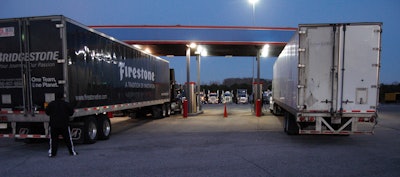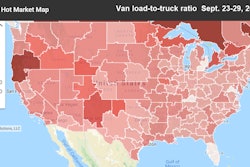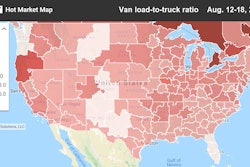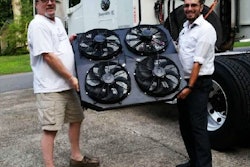 Some owner-operators focused on revenue during the hot market of 2018 and paid little attention to fuel cost savings.
Some owner-operators focused on revenue during the hot market of 2018 and paid little attention to fuel cost savings.Weighing today’s trucking market is best done with proper perspective, say speakers from ATBS, the nation’s largest owner-operator financial services firm.
“Last year was complete anomaly,” said Mike Hosted, ATBS vice president of business development. “This year is slow, but it’s just as good as many past years.”
Hosted and ATBS President Todd Amen spoke at Overdrive’s Partners in Business seminars Friday and Saturday at the Great American Trucking Show in Dallas.
For owner-operators in 2018, Amen said, “it paid for me to be out running my own business under my own authority.” Indeed, many leased operators made that change in 2016-2018, and the rate differential was sufficient to cover the extra costs and responsibilities of running independently.
 Overdrive’s Partners in Business is sponsored by TBS Factoring Service.
Overdrive’s Partners in Business is sponsored by TBS Factoring Service.Now that’s often not the case, Amen said. In addition, liability insurance rates have skyrocketed, especially for new independents.
The high demand of 2018 made it profitable to run load boards, where load-to-truck ratios were off the charts. Now, “You can’t just run load boards to make money. There’s too much capacity on there now,” he said, though rates have dropped enough that they might rebound a bit this year.
Another indicator of the boom that culminated in 2018 was cost control. For the first time in many years, owner-operators’ average miles per gallon receded from the prior year. “That means drivers didn’t pay attention to fuel costs – they were making enough money,” Amen said.

Looking at the owner-operator market long-term, compensation has clearly improved. From 2003 to 2018, net income rose from $47,600 to almost $65,000. Though the spread would be smaller if adjusted for inflation, the average annual miles driven – 139,000 in 2003, 100,000 in 2018 – shows a strong increase in earnings per mile.
Nevertheless, the shift from 2018’s pace back to business as usual means staying on top of the basics. “The most important thing is you need a plan,” Hosted said. “You’ve got to have a budget.”
The best operators know their fixed costs, variable costs and their target net income, and can use that data to determine a break-even point as a baseline for considering any given load. With an overall operating budget, you can monitor it and see when adjustments need to be made.
Unlike a fleet, “You see a problem, you can fix it right away,” Hosted said. For example, if fuel cost per mile is too high, slower average speeds and other tactics can reduce that cost. An operator getting 6 miles per gallon (assuming 100,000 miles a year and $3 diesel) can save over $7,000 a year if he can move to 7 mpg. Other tips:
- Be on guard against traditional owner-operator stubbornness over accepting low-paying loads in certain instances, such as a backhaul following a very profitable haul. “You need to focus on revenue per day to get the most out of your business,” he said. “Time is money.”
- Stay on top of maintenance. “If you defer things, it will really hurt you in the long run,” Hosted said.
- Work with an accountant who knows trucking well, understands changes in depreciation schedules and can be trusted to claim all legitimate deductions.










